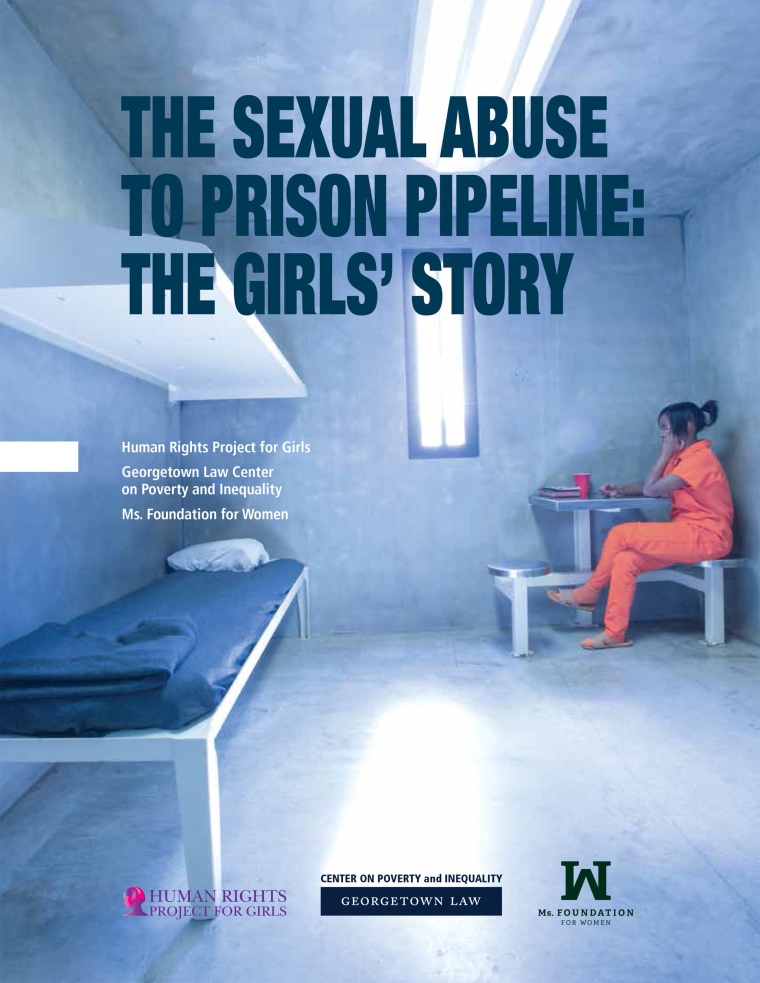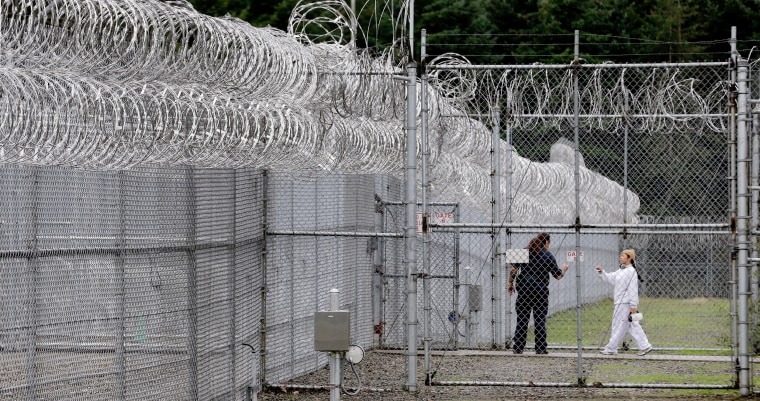“I didn’t see a whole lot of white girls in jail,” recalled 29-year-old Mia Paz, the biracial child of a black mother and a Cuban father, about her days spent as an incarcerated youth in Orlando, Florida.
Growing up in Los Angeles, Esché Jackson, 25, found that “mostly black girls” filled the facilities where she was incarcerated for running away in her youth.
That black girls, followed by Latinas, are incarcerated at higher rates than white girls is one of the key findings of The Sexual Abuse to Prison Pipeline: The Girls’ Story report compiled by the Human Rights Project for Girls, Georgetown Law Center on Poverty and Inequality and the Ms. Foundation for Women and released to the public July 9.
During a telephone conference with members of the press hours after the report’s release, Malika Saada Saar, Executive Director of The Human Rights Project for Girls, who helped spearhead the report, shared that “girls, especially girls of color, are often being routinely criminalized.” But Saar pointed out that these girls aren’t largely being detained for actual criminal activity. Instead they, as victims, are being falsely penalized.
“Our report exposes how girls, who are the fastest growing segment of the juvenile justice system, are arrested and incarcerated, not because girls are becoming violent or the new gang members; but because their experiences of sexual abuse and trauma are marginalized. Sexual abuse is one of the primary predictors of girls’ entry into the juvenile justice system,” she continued. “The most egregious example of the sexual abuse to prison pipeline is how girls who are trafficked for sex are arrested for prostitution.
“According to the FBI, African American children comprise 59 percent of all prostitution-related arrests for those under the age of 18, the vast majority of whom are girls. It is important to note, as our report does, that ‘the sexual abuse to prison pipeline’ is really a pipeline for girls of color. It is black and brown girls who are disproportionately arrested and incarcerated for their abuse and trauma.”
The report also reveals that “African-American girls constitute 14 percent of the general population nationally but 33 percent of girls detained and committed,” with their rate of sexual abuse at four times higher than that of boys.
It is that trauma that is most often the gateway to the detainment of black and brown girls who are frequently arrested for running away, truancy, substance abuse and prostitution. That was certainly the case for Paz.
Youth of color account for 45 percent of the general youth population, but girls of color—who are approximately half of all youth of color—comprise approximately two-thirds of girls who are incarcerated. —The Sexual Abuse to Prison Pipeline: The Girls’ Story
Abused by her uncle at a young age, Paz had difficulty telling her family and instead mostly ran away. At 16, an encounter with law enforcement, re-triggered that trauma, resulting in a charge for resisting arrest. “In my mind what the police did wasn’t much different than what my uncle did,” explained Paz when describing the manner in which she was detained.
Being physically restrained by male cops was a painful reminder that resulted in an instinctive and defensive reaction leading to her arrest. But law enforcement did not catch on to this link. And for a long time Paz, like many victims, failed to speak of what her uncle had done.
“I could tell my friends and family about the cops but I didn’t think I could tell anyone about my uncle,” Paz said, analyzing her past behavior. “Because my fear kept me silent and, because no one understood why I was running, I was treated like a criminal,” she said.

It wasn’t until she was placed in the PACE Center for Girls in Orlando where trained professionals recognized her hidden trauma, that Paz revealed her abuse and got the help she needed. Today the recent law school graduate is studying for the bar.
Bringing greater awareness to this pervasive reality is one of the main objectives of the report, which calls for advanced mental health training and the enactment of policies aimed at helping girls who have been abused as opposed to criminalizing them.
For far too many girls, the report revealed, their abuse starts very early. One California study quoted found that “the age at which girls were ‘most likely’ to be fondled or molested was five years old.”
Even worse, girls in the juvenile justice system are typically subjected to multiple sexual abuse violations. “In a 2014 study of the abuse histories of more than 60,000 youth in Florida’s juvenile justice system, for example, girls reported having experienced Adverse Childhood Experiences (ACEs) at higher rates than boys in all 10 categories of trauma and abuse analyzed. Nearly half of the girls (45.1 percent) experienced five or more forms of trauma and abuse, compared to less than one-third (27.4 percent) of boys,” according to the report.
In the face of such abuse, girls, however, find that their ways of coping through running away, substance abuse and truancy often backfire against them, resulting in incarceration.

Unfortunately, because the focus is most often the primary caretaker and not on potentially offending members of the household or frequent household guests, sexual abuse is often missed during child welfare services investigations. As a result, sexual abuse goes widely underreported with few child welfare cases, according to the report, even being “initiated based on sexual abuse allegations.”
Girls in the child welfare system are more likely to be incarcerated with the system adversely affecting black girls.
African-American youth’s involvement in the child welfare system, the report found, is over twice their representation in the overall population of children, with girls also dominating those numbers. In one county alone, “27 percent of black girls in juvenile detention had an open child welfare case compared to [just] 7 percent of youth overall and 13 percent of African-American boys.”
Seventy percent of youth who have contact with both the child welfare system and the juvenile justice system were found to re-enter the justice system “compared to 34 percent of their peers who had not had contact with the child welfare system.”
African Americas constitute 14 percent of the general youth population nationally, but one-third of incarcerated girls. — The Sexual Abuse to Prison Pipeline: The Girls’ Story
When human trafficking is in play, girls lose even more. Although they are victims of sexual exploitation, historically they have been arrested as perpetrators through prostitution, with the actual perpetrators rarely being punished at all, which further reinforces to the victimized girl that she is at fault.
To alleviate this practice and ultimately destroy this devastating pipeline, the report suggests that states not allow children under the age of 18 to be arrested for prostitution or prostitution-related offenses and instead urges that states create safe harbor laws directing victims towards treatment. It also calls for an improvement in mental health treatment and stronger efforts to collect data related to the woefully underreported sexual abuse of young girls and this important link to prostitution.
But, on an even larger scale, there are concrete reasons to be hopeful. With the Juvenile Justice and Delinquency Prevention Act, the nation’s single most important piece of federal legislation focused on youth and juvenile justice systems up for reauthorization, “an important avenue for reform” has opened up, stressed Yasmin Vafa, co-founder and Director of Law and Policy at The Human Rights Project for Girls.
And that, Vafa insisted, “presents the critical opportunity to improve our response towards justice involving girls, making the destruction of the sexual abuse to jail pipeline more tangible than ever.
To read the report in full, download it here